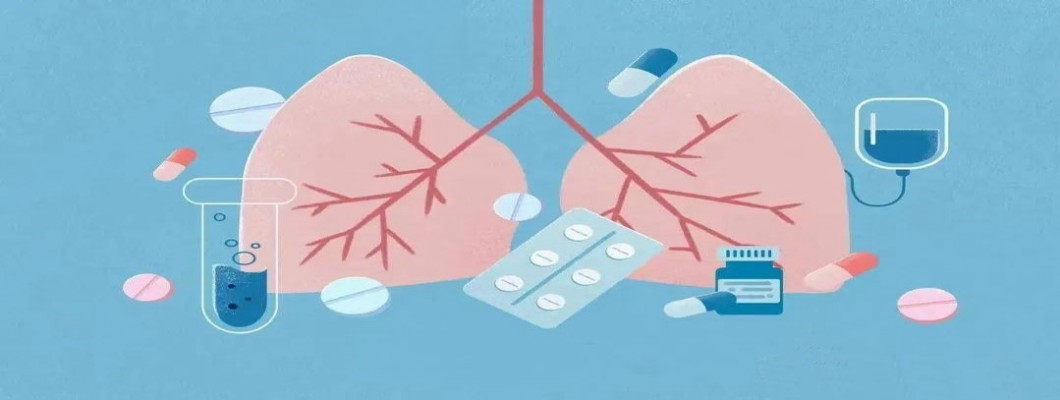
Silicosis, also known as silicosis, is a common form of pneumoconiosis, usually caused by long-term exposure to dust and inhalation of large quantities of silica-containing dust, resulting in a disease dominated by fibrosis of the lungs.
The lung damage caused by silicosis is irreversible, and many scientists have tried to find new treatment strategies to slow down the course of silicosis and improve the quality of life of patients.
In a recent article in Nutrients, a scientific team found that NMN treatment resulted in positive changes in lung tissue, with a significant reduction in inflammatory cells and inflammatory infiltrates, confirming that NMN does indeed reduce lung injury in mice. NMN supplementation may be an effective therapeutic strategy to alleviate silicosis.

To simulate silicosis, the researchers induced silicosis by introducing silica powder directly into the trachea of mice. The trachea was then insufflated daily with saline, low-dose NMN (500mg/kg), and high-dose NMN (1000mg/kg). Then 2 additional control groups were set up, both without silicosis treatment, one saline control and one NMN (1000mg/kg) control. The details are shown in Table 1, divided into Sham, Vehicle, NMN-H, NMN-L, and NMN-con.

I. NMN mitigates lung damage caused by silica
Compared with the Sham mice, the Vehicle mice showed significantly higher lung weight factors, pathological scores and collagen volume scores, severe disruption of lung tissue structure, and a significant increase in collagen fibre deposition in interstitial tissue after 28 days of silica exposure. This indicates that silica powder can indeed cause lung damage.
In contrast, the lung tissue structure of mice in the NMN-H group was more intact, with only a few small inflammatory cell nodules.The degree of lung injury in the NMN-L group was also lower than that in the Vehicle group, suggesting that NMN significantly attenuated silica-induced lung injury.
II. NMN alleviates silica-induced oxidative stress and immune disorders
To investigate how NMN mitigates silica-induced lung injury, scientists conducted an in-depth study. Since previous studies have confirmed that oxidative stress is a major mechanism by which silica causes lung injury, the researchers measured ROS levels in lung cells.
As expected, ROS levels were significantly elevated in the lung tissue of mice in the Vehicle group, and were significantly reduced in the NMN-H group with 1000 mg/kg NMN. However, the NMN-L group with 500 mg/kg NMN did not reduce the ROS level at 7 days, and still reduced it at 28 days, and the reduction was not as effective as that of the NMN-H group.
Since glutathione (GSH) is one of the main substrates for ROS scavenging, the researchers also measured glutathione levels in lung tissue. The results showed that GSH expression was reduced in the lung tissues of mice in the silica-exposed Vehicle group compared to the Sham group, while it was dose-dependently elevated in the lung tissues after NMN supplementation. Both indicators suggested that NMN alleviated silica-induced oxidative stress injury in the lungs.
In addition, due to the presence of inflammation, the researchers also examined the immune profile of the lung tissue. The results showed an abnormal increase in the proportion of macrophages, CD4+ CD69+ T cells and CD8+ CD69+ T cells, both on day 7 and day 28. This suggests that silica can disrupt the immune balance of lung tissue, leading to inflammatory damage.
In contrast, both 500 mg/kg and 1000 mg/kg NMN reduced the macrophage, CD4+ CD69+ T cell and CD8+ CD69+ T cell ratios in the lung tissues and almost restored them to the level of the Sham group. This suggests that NMN alleviated silica-induced inflammatory damage and corrected the immune disorders in lung tissues.
III. NMN promotes GSH synthesis and reduces oxidative damage
It is not enough to know that NMN reduces oxidative stress and corrects immune disorders, in order to further understand the protective mechanism of NMN on silicosis, the researchers measured the expression of related genes. Among them, Gstm1, Gsto1, Gsta4, and Mgst1 have significant changes in expression and are involved in the regulation of multiple signalling pathways, so they became the focus of the study.
Gstm1 and Mgst1 are target genes of the antioxidant pathway Nrf2, and the expression of Nrf2 mRNA and Nrf2 protein was subsequently measured, and it was found that silica decreased the expression of both, which was up-regulated by supplementation of NMN. By observation, they found that NMN could promote Nrf2 entry into the nucleus, implying that NMN may regulate the expression of antioxidant-related genes by promoting Nrf2 expression and nuclear translocation.
Subsequently, by querying the gene interaction network, it was finally found that NMN promotes GSH synthesis by up-regulating the expression of antioxidant genes, such as Nrf2, thus scavenging ROS and alleviating oxidative damage in the lungs.
NMN has already gained widespread attention as an anti-aging and repairing treatment, and this study of silicosis therapeutic methods has once again demonstrated the potential of NMN.

Leave a Comment